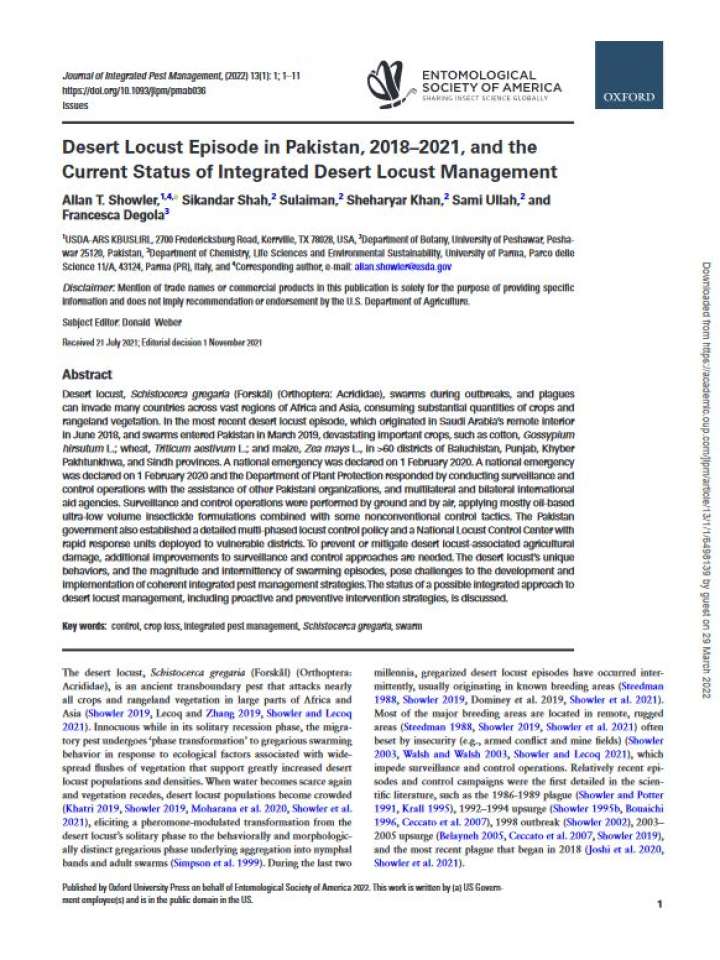Desert locust episode in Pakistan, 2018–2021, and the current status of integrated desert locust management
Pakistan is within the desert locust’s recession distribution, but effects of desert locust activity there have not, until this report, been detailed in the scientific literature. The purpose of this article is to describe the chronology, responses to, and impacts of the recent desert locust episode in Pakistan, including risks to food security and possible approaches for preventing future desert locust incursions by adopting early intervention strategies and integrated pest management (IPM) tactics.
A national emergency was declared on 1 February 2020 and the Department of Plant Protection responded by conducting surveillance and control operations with the assistance of other Pakistani organizations, and multilateral and bilateral international aid agencies. Surveillance and control operations were performed by ground and by air, applying mostly oil-based ultra-low volume insecticide formulations combined with some nonconventional control tactics. The Pakistan government also established a detailed multi-phased locust control policy and a National Locust Control Center with rapid response units deployed to vulnerable districts. To prevent or mitigate desert locust-associated agricultural damage, additional improvements to surveillance and control approaches are needed.
Explore further
